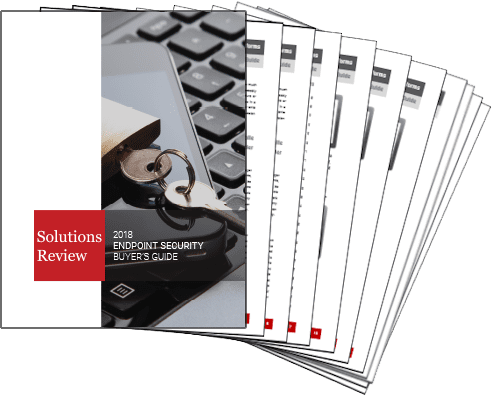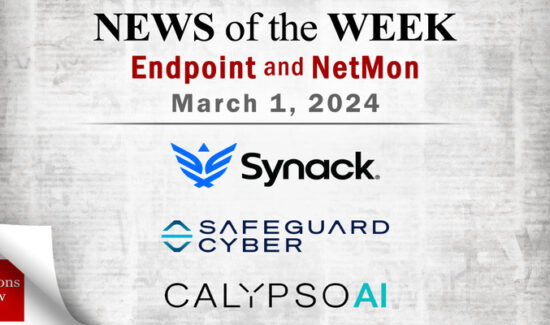The Key To Endpoint Security is Understanding the Threat Landscape


In days past, securing your enterprise with an endpoint security solution was as simple as picking an antivirus product (probably the one with the best cost-value for you) and simply installing it on all of your corporate endpoints. Just like that, no need to worry or even think about malware ever again.
Unfortunately, that isn’t the case anymore. We’ve said it before and we’ll say it again: legacy antivirus solutions and last generation endpoint security is woefully inadequate in the modern threat landscape. The most such solutions can offer you is a placebo—the illusion that you are secure when you are in fact more vulnerable than ever.
Why are next-gen endpoint security solutions better for handling the modern threat landscape? And how can understanding the threat landscape help you make a better solution selection?
Here’s what you need to know:
Traditional Malware is Yesterday’s Problem
Don’t misunderstand us and our subtitle—traditional malware that was the digital plague of enterprises persists. In fact, malware nowadays can prove to be a versatile weapon in the hackers’ arsenal, especially because threat actors like to modify and upgrade old strains to do inflict new kinds of damage or subvert new security systems.
However, malware is no longer the go-to tool it once was for hackers. As legacy antivirus solutions became more widespread, traditional malware proved to be less effective—leading hackers to create more dangerous weapons. Additionally, the goals of hackers have shifted considerably, changing the threat landscape with it. Where once business process disruption or direct financial theft—traditional malware’s domains—was the primary goal for threat actors…
Cryptocurrency Mining and IP Theft Are Kings
We’ve written a lot about the prevalence of illicit cryptocurrency mining (sometimes called cryptojacking). While such attacks appear to be reaching a plateau according to endpoint security vendors’ research, they remain a threat so long as cryptocurrency continues to hold value.
Illicit cryptocurrency mining involves using an enterprise endpoints’ processing power to “mine” cryptocurrency, costing enterprises thousands in resulting network slowdowns, stoppages, and electrical costs. The damage from overheating systems alone can be devastating.
Yet at the same time, cryptocurrency mining malware is far subtler than traditional malware. It penetrates the network and dwells, harvesting precious power covertly. Given how much can be made in cryptocurrency, it’s no wonder it’s supplanting ransomware as the top threat.
A less popular attack that is rapidly gaining popularity among threat actors is the fileless malware. Unlike traditional malware, and as its name suggests, fileless malware does not need to install a detectable file to function.
Instead, fileless malware exploits natural endpoint processes and functions to achieve their goals, piggybacking (for lack of a better term) to avoid detection and leaving the network just as quickly as they entered. Often, their goal is to download valuable proprietary data and intellectual property—often a far more worthwhile prospect than going after your finances directly.
The modern threat landscape is evolving to make both of these threats everyday occurrences which legacy antivirus solutions can’t handle.
What Even Is an Endpoint?
In the early days of the internet, it was easy to identify your corporate endpoints—they were whatever computers physically in your offices.
That’s not the case today. Your physical computers still matter, but what about employees’ mobile devices? Does your enterprise allows bring your own devices (BYOD)? How many employees take advantage of that? If you are a customer-facing enterprise, do you think about the security vulnerabilities on those endpoints accessing your enterprise? What about the cloud (the assets on which you are still responsible for)? What about your (notoriously unsafe) IoT devices?
Legacy antivirus solutions can’t begin to answer any of these questions…all of which could be a potential security hole in your IT perimeter.
The Modern Threat Landscape Depends on You
Ultimately, the threat landscape your enterprise faces on a daily basis will depend entirely on what your business actually does; a manufacturer might have to worry about industrial IoT attacks disrupting or ransoming production while a marketing firm should worry more about fileless malware stealing data. Legacy antivirus solutions provide a one-size-fits-all approach that does not adequately protect enterprises of any industry.
Next-gen endpoint security solutions often specialize in particular and specific use cases to provide the best protection for individual enterprises. They’re now armed with endpoint detection and response (EDR) to facilitate your IT perimeter and catch threats that have slipped past your defenses. They have the tools and the talents to keep you safe in the modern threat landscape.
The choice is pretty clear to us.
Other Resources:
Gartner’s 2018 Magic Quadrant for Endpoint Protection Platforms (EPP): What’s Changed?
4 Tips For Endpoint Security Solutions (That Everyone Forgets)
Endpoint Security Advice for the CISO on the Go!
Endpoint Security vs Legacy Antivirus: What’s the Difference?
Comparing the Top Endpoint Security Vendors — Solutions Review
Answering the Top 4 Enterprise Endpoint Security Questions
Endpoint Detection and Response (EDR): The Way of the Future?
What Can We Expect for the Future of Endpoint Security?


























